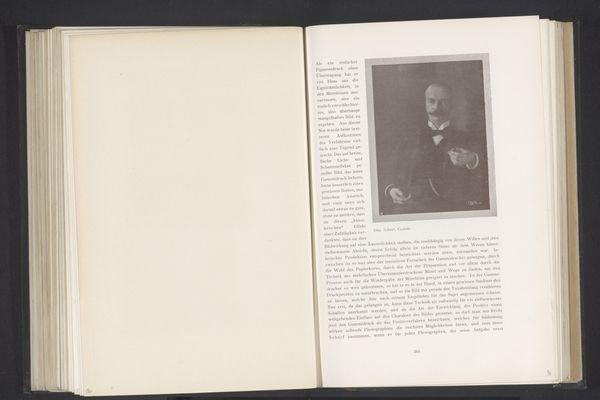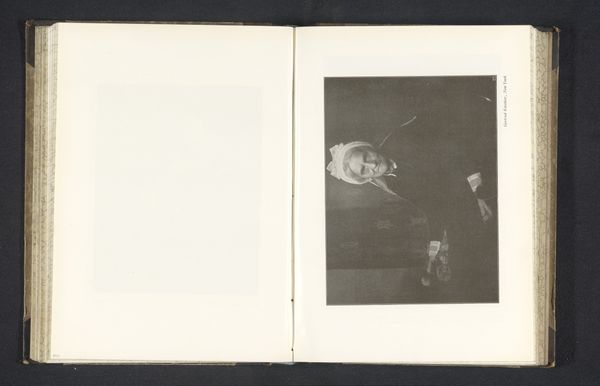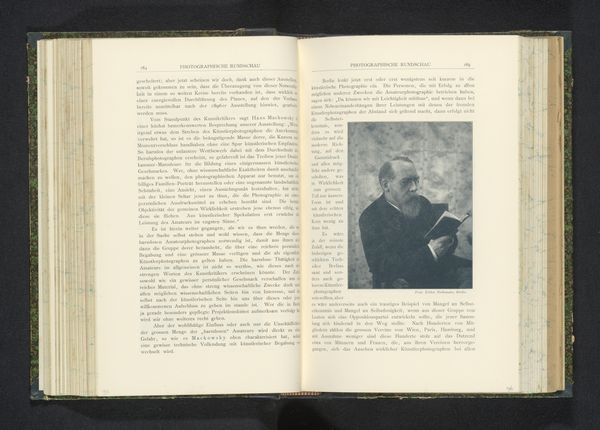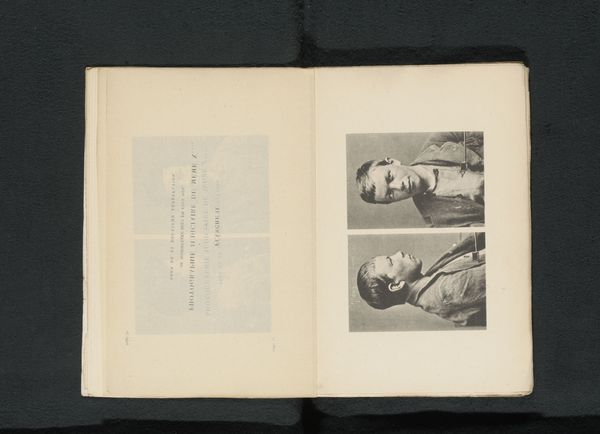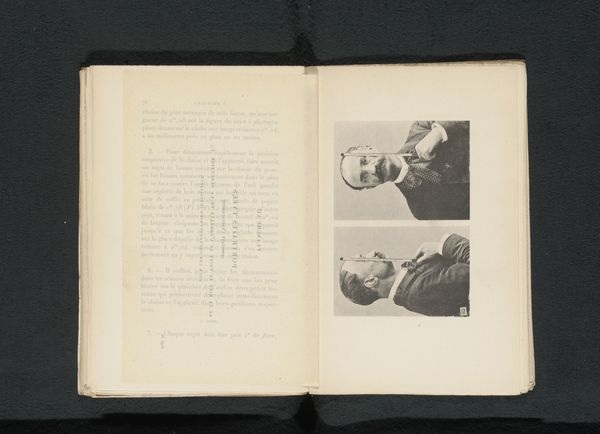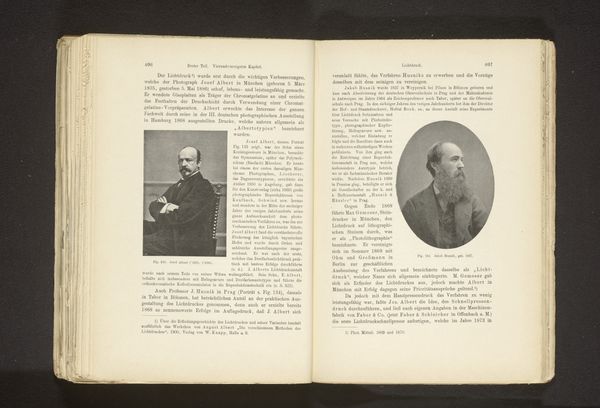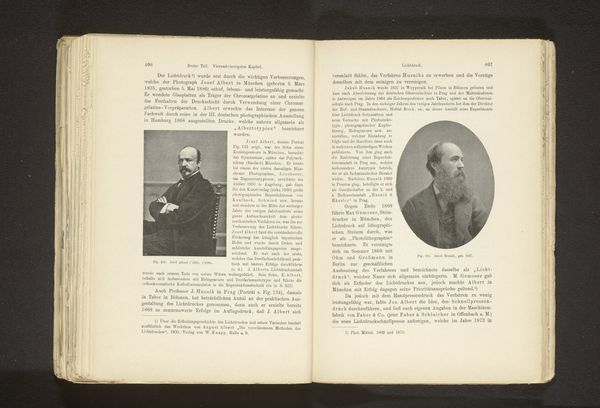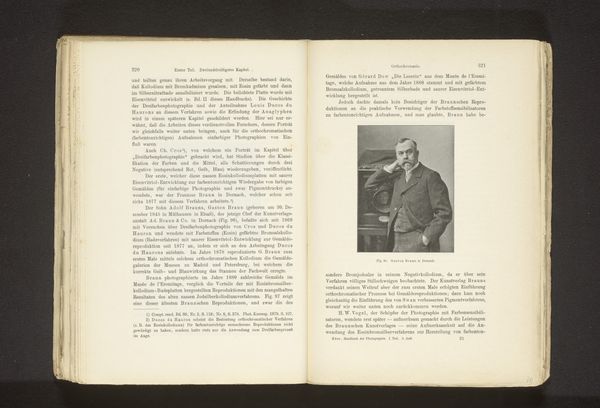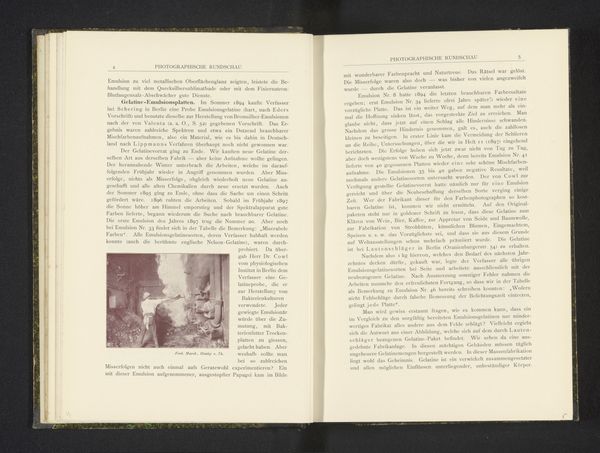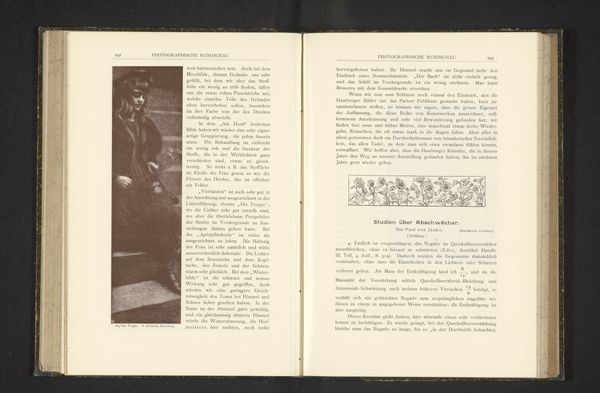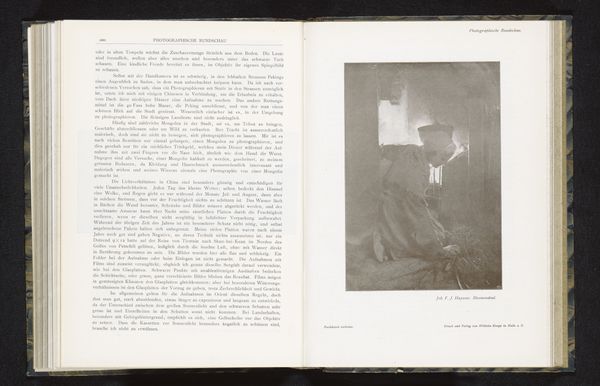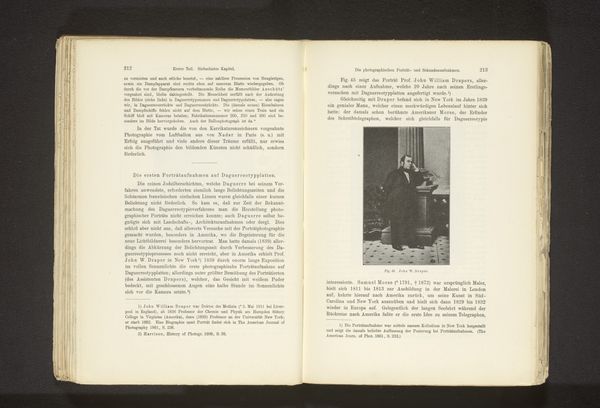
print, photography
#
portrait
#
script typeface
#
aged paper
#
still-life-photography
#
paperlike
# print
#
personal journal design
#
photography
#
thick font
#
publication mockup
#
handwritten font
#
thin font
#
modernism
#
publication design
#
small font
Dimensions: height 104 mm, width 124 mm
Copyright: Rijks Museum: Open Domain
This is a photographic portrait of an unknown man by Fritz Loescher, likely from the early 20th century. It’s made using a process that, at the time, was rapidly changing from an esoteric science to a form of mass media. Consider how photography democratized portraiture. Before this, only the wealthy could afford to have their likeness captured through painting or sculpture, forms of art dependent on skilled labor and expensive materials. Photography automated this process, capturing an image through chemical reactions on light-sensitive paper. The resulting photograph, mass-produced, became an affordable luxury, a marker of status available to a wider segment of the population. And with its rise, the idea of who was worthy to be seen and remembered also expanded, reflecting changing social values and the growing power of the middle class. Photography thus played a critical role in reshaping visual culture and social identity.
Comments
No comments
Be the first to comment and join the conversation on the ultimate creative platform.


